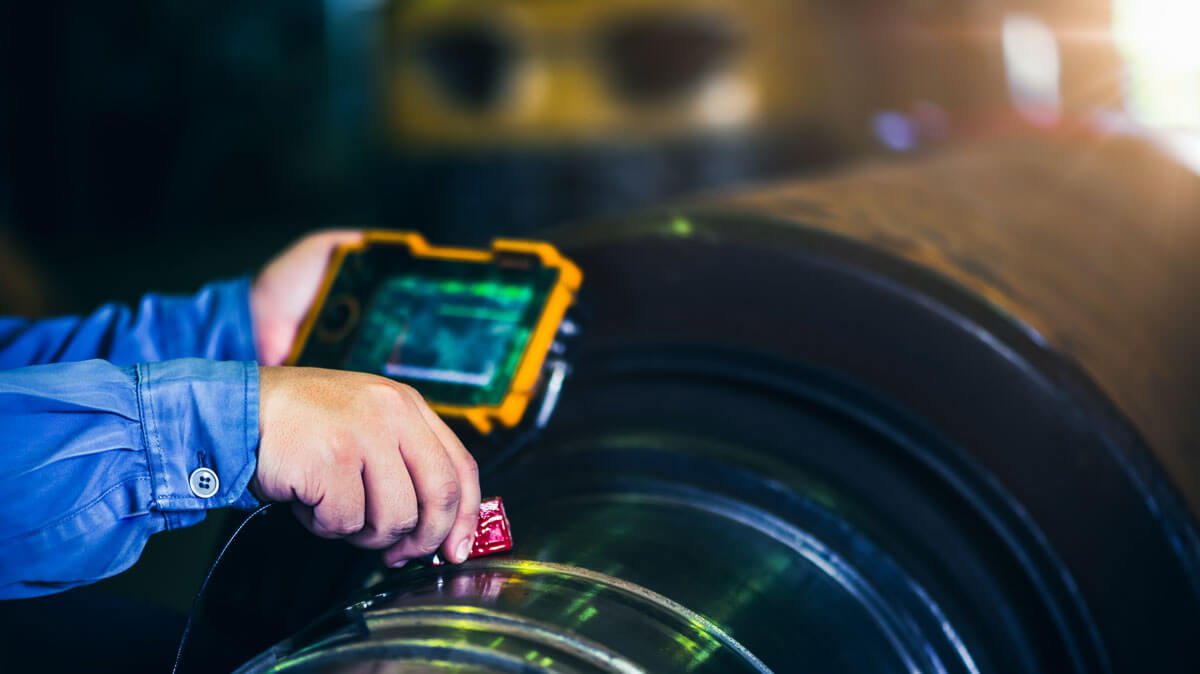A Comprehensive Overview to Welding Evaluation Techniques and Ideal Practices for Quality Control in Manufacture Projects
Welding assessment offers as a basic column in making certain the structural honesty and safety and security of fabricated projects. Establishing effective practices and a robust quality monitoring system can boost conformity and reliability.
Significance of Welding Assessment
Welding examination is an essential component in guaranteeing the stability and safety and security of bonded frameworks. The procedure involves a methodical examination of welds to determine any flaws that might compromise the strength and sturdiness of the end product. Reliable examination is crucial not just for conformity with market standards and policies however likewise for guarding the health and wellness of personnel and the public.

In addition, welding examination offers as a useful tool for continuous improvement in fabrication procedures. Inevitably, focusing on welding evaluation fosters a culture of quality assurance, ensuring that tasks fulfill both client expectations and regulatory requirements.
Typical Welding Inspection Strategies
Numerous strategies are used to check welds, each tailored to detect specific sorts of problems and ensure top quality. Among the most typically utilized approaches are aesthetic evaluation, ultrasonic testing, radiographic testing, magnetic particle screening, and color penetrant testing.
Aesthetic examination is the most uncomplicated method, permitting examiners to recognize surface abnormalities such as cracks, porosity, and damaging. Ultrasonic screening utilizes high-frequency acoustic waves to identify interior flaws, providing a thorough evaluation of weld stability. Radiographic testing utilizes X-rays or gamma rays to produce images of the weld, exposing internal issues that are not noticeable to the naked eye.
Magnetic bit testing is particularly reliable for ferromagnetic products, determining surface and near-surface problems by using magnetic fields and making use of fine bits that show irregularities. Color penetrant screening includes applying a tinted color to the weld surface area, which seeps into cracks and is revealed under ultraviolet light, making it easy to find problems.
Each of these methods plays a critical duty in maintaining welding quality, and the option of an appropriate method depends on the specific requirements of the manufacture task, consisting of product kind, weld setup, and the preferred level of evaluation.
Vital Evaluation Tools


Measuring devices, consisting of calipers, assesses, and rulers, are crucial for validating dimensions and resistances. These instruments help make certain that welds satisfy the needed requirements for strength and durability. In addition, ultrasonic testing devices find are employed to find internal defects without jeopardizing the honesty of the weld. This non-destructive screening method is vital for recognizing concerns that may not show up externally.
Another vital device is the firmness tester, which examines the mechanical residential or commercial properties of a weld and identifies its suitability for particular applications. Welding inspection software program help in recording findings, assisting in data analysis, and ensuring conformity with market requirements. With each other, these vital evaluation tools develop an extensive arsenal that sustains the welding assessment process, inevitably contributing to the quality control of fabrication projects.
Best Practices for Top Quality Guarantee
In the pursuit of quality control, carrying out finest practices is essential for accomplishing trustworthy and consistent welding outcomes. Developing a comprehensive welding top quality administration system (WQMS) is basic. This system ought to incorporate specified procedures, criteria, and documentation techniques that direct every stage of the welding process.
Routine training and certification of welding workers are crucial. Knowledgeable welders with updated expertise of techniques and precaution contribute dramatically to quality. Additionally, performing pre-welding evaluations makes certain that materials and devices fulfill specified requirements, lowering the possibility of issues.
Integrating real-time surveillance throughout the welding procedure permits immediate detection of abnormalities, making it possible for corrective actions to be taken quickly. Post-welding assessments, consisting of visual checks and non-destructive testing (NDT), are vital in validating weld honesty and compliance with industry requirements.
Furthermore, keeping meticulous records of assessments, weld criteria, and corrective actions promotes a society of accountability and constant renovation. Involving stakeholders in regular quality reviews can likewise improve the a knockout post total performance of high quality guarantee measures. By sticking to these best methods, organizations can considerably raise their welding quality assurance efforts, thereby making certain job success and customer satisfaction.
Enhancing Safety And Security and Conformity
Achieving high requirements in welding quality control normally lines up with the essential of boosting safety and security and conformity within the sector. Effective welding assessment methods are vital in determining potential dangers and making sure that all procedures stick to governing criteria. These techniques not only offer to maintain architectural honesty yet likewise protect the health and wellness of workers associated with construction projects.
Executing extensive examination methods, such as aesthetic evaluations, non-destructive testing (NDT), and thorough documentation, develops a culture of safety and accountability. Training welders and examiners in present safety and security guidelines and best methods is crucial. This ensures that all team participants know prospective risks and are outfitted to alleviate them.
Additionally, conformity with industry standards, such as those established by the American Welding Culture (AWS) and the International Company for Standardization (ISO), is non-negotiable. Routine audits and evaluations help recognize spaces in safety measures and advertise constant renovation - Welding Inspection Milwaukee. Ultimately, a commitment to improving safety and compliance not just promotes a safer working environment yet also results in exceptional top quality results and lowered liability for companies participated in welding construction
Verdict
Welding assessment offers as an essential column in guaranteeing the architectural integrity and security of made projects.Welding assessment is a crucial part in ensuring the stability and safety and security of bonded structures. Eventually, focusing on welding inspection promotes a society of top quality assurance, making sure that tasks meet both client assumptions and governing requirements. Together, these necessary inspection tools develop a thorough arsenal that supports the welding assessment procedure, inevitably adding to the high quality guarantee of fabrication tasks.
In verdict, reliable welding inspection is imperative for ensuring the architectural honesty and safety and security of produced tasks. Welding Inspection Milwaukee.